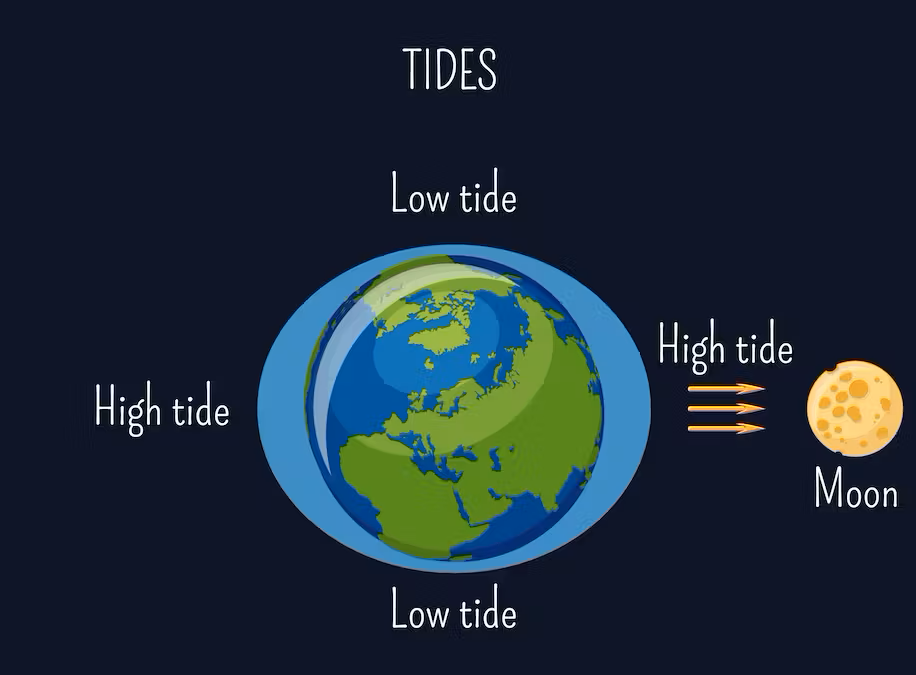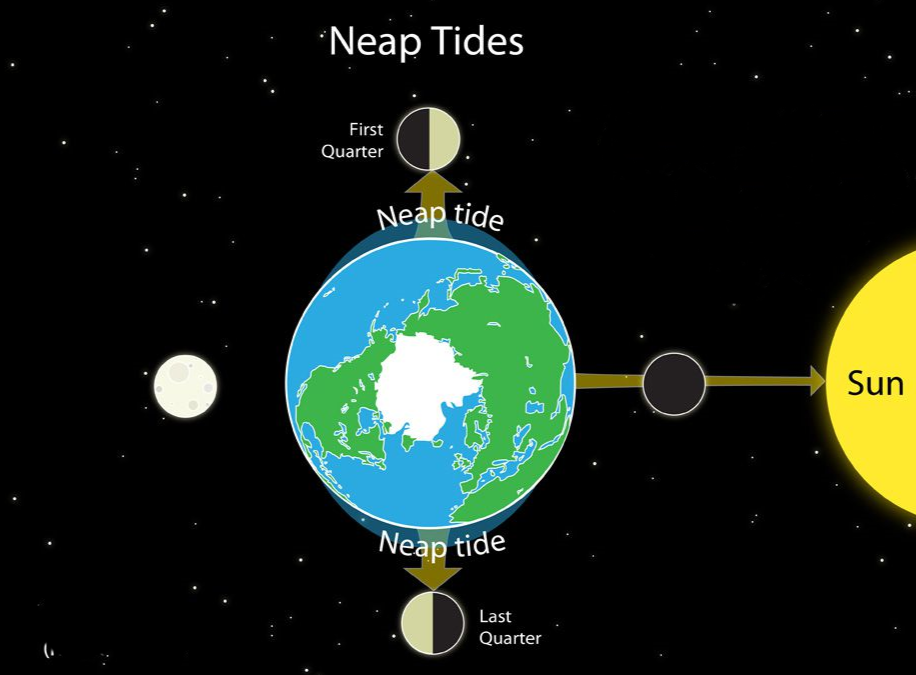
How Tides Work
The Moon
The moon's gravitational pull generates something called the tidal force. The tidal force causes Earth—and its water—to bulge out on the side closest to the moon and the side farthest from the moon. These bulges of water are high tides. As Earth rotates, your region experiences two high tides each day.
The Earth's Rotation
The rotational force of the Earth causes the side opposite of the moon to bulge as well, causing a second high tide. The moon's gravity pulls on the Earth's water, causing a high tide on the side closest to the moon and a high tide on the side farthest.

Neap & Spring Tides
Neap Tides
When the moon is perpendicular to the sun, the gravitational pull of the sun counteracts that of the moon. This causes the bulge of water to be less extreme, resulting in a neap tide. A neap tide example is pictured above.
Spring Tides
When the sun, moon, and Earth are aligned, the gravitational pull of the sun
adds to that of the moon, causing maximum tides. These are called spring tides, a common
historical term that has nothing to do with the season of spring.